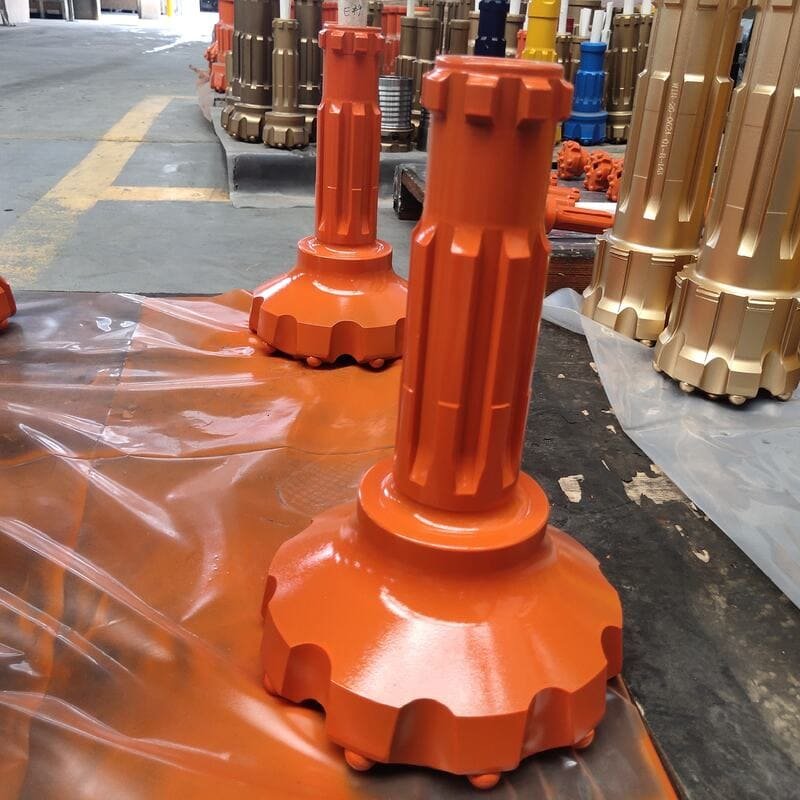Drilling through rock is like solving a complex puzzle where every piece, or in this case, rock type, plays a crucial role.
Crater wear on DTH drill bits is shaped by the rock's hardness, abrasiveness, fracture toughness, mineral composition, and chemical properties. These elements influence how the bit withstands stress and abrasion, creating distinct wear patterns.
When I first started in the drilling industry, I quickly realized that understanding these wear patterns isn't just about preserving equipment—it's about optimizing every aspect of the operation. Each rock type tells a different story, and knowing these narratives helps in selecting the right tools and keeping them in top shape. Let's dive deeper into these factors and see how they can transform your drilling strategy.
Rock hardness directly affects crater wear on drill bits.True
Harder rocks increase stress and abrasion, leading to more wear.
Chemical properties of rocks have no impact on drill bit wear.False
Chemical properties can influence corrosion and wear patterns on bits.
How Does Rock Hardness Affect Drill Bit Wear?
Ever wondered why your drill bits wear out so fast when dealing with certain rocks? It all comes down to the rock's hardness and its relentless impact on your equipment.
Rock hardness plays a significant role in drill bit wear by demanding more force and energy to penetrate the rock, which increases stress on the bit. Harder rocks accelerate wear, necessitating frequent replacements.
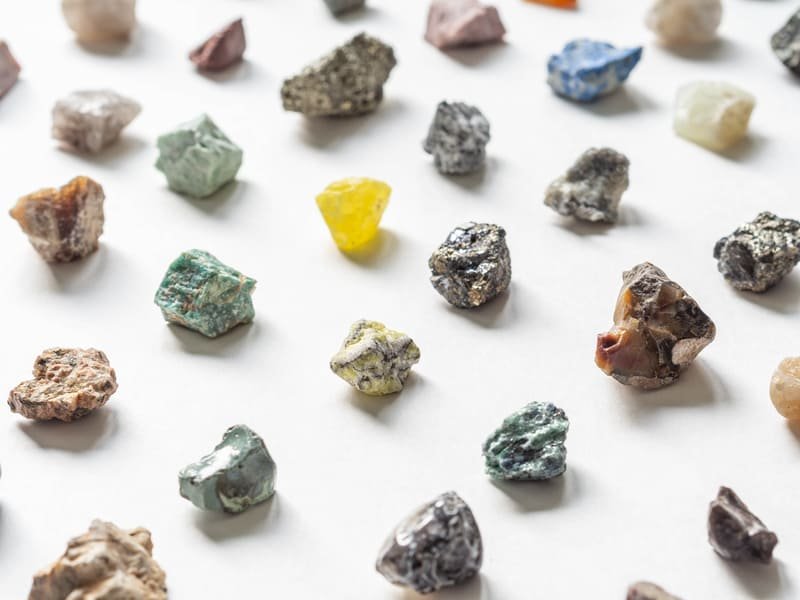
Hardness and Wear Mechanisms
I remember the first time I tackled drilling through quartz. It was like my drill bit was waging a war against the rock. With every attempt to penetrate that hard surface, I could feel the increased stress and hear the struggle, almost as if the bit was groaning under pressure. Hard rocks like quartz or granite demand so much more energy because of their high compressive strength1. This often leads to crater wear around cutting and impact zones, forming because of the constant high-pressure contact between the bit and the rock surface.
| Rock Type | Typical Hardness (Mohs) | Common Drill Bit Wear |
|---|---|---|
| Quartz | 7 | High crater wear |
| Granite | 6-7 | Moderate to high wear |
| Limestone | 3-4 | Low wear |
Abrasive Rocks and Their Impact
Working with abrasive rocks can feel like sandpaper on steroids. These rocks contain minerals like silica that grind down the drill bit's surface. I often find myself dealing with these abrasive particles that are relentless, forming crater-like patterns2 on the bit surface and necessitating more frequent changes.
Influence of Rock Fracture Toughness
Some days, drilling through brittle rocks like shale feels like navigating a minefield. They fracture easily, creating uneven impact forces that can concentrate stress on my bit, leading to localized deformation and potential crater formation3. In contrast, tougher rocks keep a steady pressure on my bit—less sudden wear, but still a slow, inevitable grind over time.
Mineral Composition and Grain Size Effects
Large-grain rocks have always been a formidable opponent for me. Imagine each grain as an anvil; every strike causes localized damage, wearing down the bit faster. Rocks with mixed mineral compositions are even trickier, with hard minerals resisting wear longer and creating pits around them as softer components erode faster.
Variability in Rock Homogeneity
Drilling through inhomogeneous rocks is like driving on a road full of potholes. As I transition between softer and harder patches, my bit encounters varying resistance levels, leading to localized overheating4 and stress concentration.
Chemical Interactions and Wear Patterns
It's not just the physical properties I have to watch out for—some rocks have chemically reactive properties too. Combine them with water used for cooling, and you've got a recipe for accelerated wear through chemical reactions. These reactions form acids or other corrosive substances that exacerbate mechanical wear and contribute to faster crater formation5.
Quartz causes high crater wear on drill bits.True
Quartz has a Mohs hardness of 7, leading to significant wear.
Limestone causes high wear on drill bits.False
Limestone, with a Mohs hardness of 3-4, results in low wear.
How Do Abrasive Minerals Impact DTH Drill Bits?
Ever wonder how those tough rocks impact your drill bits? Let me take you through it.
Abrasive minerals, like quartz and silica, cause crater-like wear on DTH drill bits through mechanical abrasion. This reduces efficiency and increases both costs and downtime.
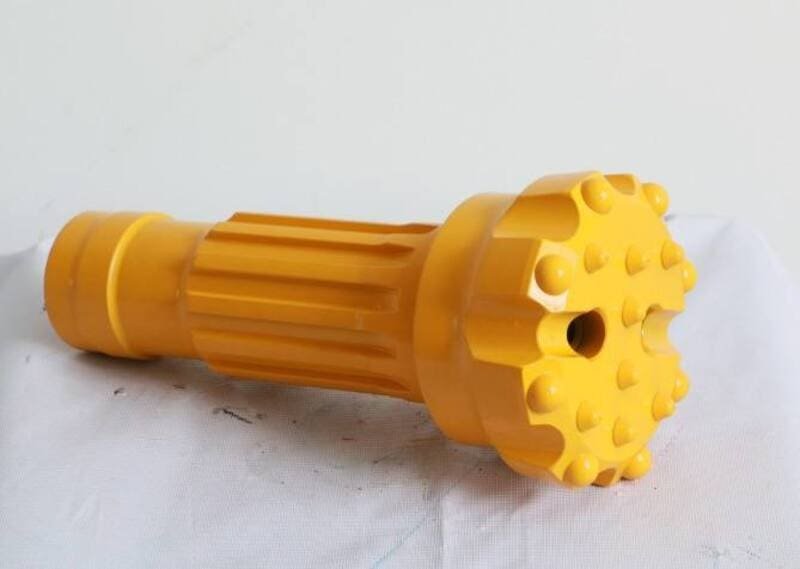
My Experience with Hard and Abrasive Rocks
I still vividly remember the first time I had to deal with drilling through granite. It was like my drill bit was in a constant battle, wearing down much faster than I ever anticipated. Abrasive minerals such as quartz have such high compressive strength6 that it felt like I was trying to punch through a steel wall. The stress on the drill bit was visible almost immediately.
Take quartz, for example. Its high hardness7 was a nightmare, grinding away at the softer parts of the bit around the carbide inserts. It was like watching a sculptor create craters on my drill bit's surface.
| Rock Type | Mineral Composition | Effect on Drill Bit |
|---|---|---|
| Granite | Quartz, Feldspar | High wear due to hardness |
| Basalt | Pyroxene, Olivine | Moderate wear, depending on grain size |
Grain Size and Mineral Composition: A Sneaky Duo
Through trial and error, I’ve learned that the grain size in rocks can be just as sneaky. Larger grains act like tiny anvils, making their mark with every strike of the bit. It's not just the size; it's the mix of minerals too. Rocks with mixed compositions create uneven wear patterns, thanks to their varying hardness.
- Coarse-Grained Rocks: Each large grain impact left my drill bit looking like it had been hit by a meteor shower.
- Mixed Composition Rocks: The harder minerals outlasted the softer ones, creating pits as if they were tiny saboteurs.
Chemical Reactions: The Unseen Enemy
To top it all off, some rocks have chemical properties that exacerbate wear. In wet environments, water can trigger chemical reactions that form acids. These acids can attack the bit material in ways I never expected.
Example: In areas with high chemical reactivity8, I've seen acidic reactions between water and rock minerals lead to chemical erosion.
Understanding these interactions has helped me choose the right bit material and design for different geological conditions. It’s been a game-changer in enhancing drilling efficiency and cutting down on costs.
Quartz causes high wear on DTH drill bits.True
Quartz's hardness grinds down softer matrix around carbide inserts.
Coarse grains reduce wear on DTH bits.False
Coarse grains increase localized wear, forming pronounced craters.
How Does Rock Fracture Toughness Affect Crater Wear?
Ever wondered why some drill bits wear out faster than others? It's all about the rock's fracture toughness and how it impacts crater wear during drilling.
Rock fracture toughness directly influences crater wear by affecting how easily rocks break under stress. Tougher rocks demand more energy to crack, leading to increased wear on drill bits, while more brittle rocks can cause uneven wear patterns.
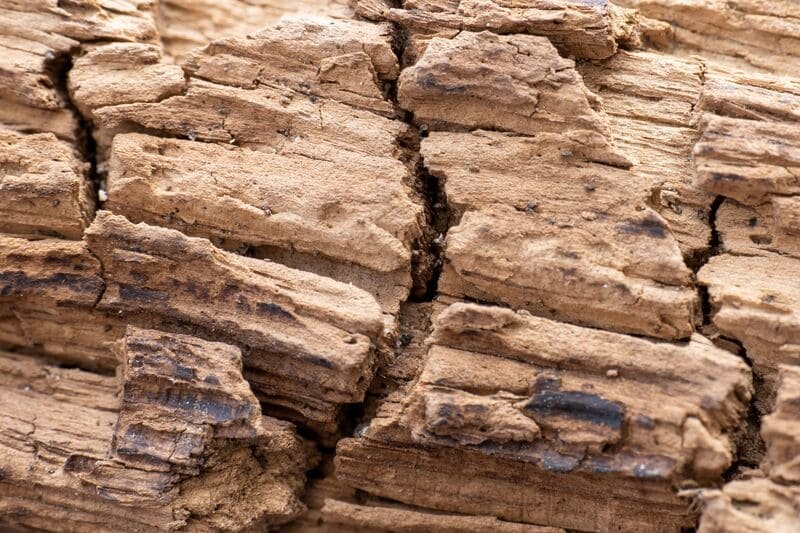
Understanding Rock Fracture Toughness
When I first started in the drilling industry, I remember being puzzled by why some drill bits seemed to give up the ghost much quicker than others, even in seemingly similar conditions. It turns out, a major player in this mystery is the rock's fracture toughness. This property essentially tells us how much a rock resists breaking apart when there's already a crack present. In the world of geology and mining, this knowledge is gold because it helps us predict how rocks will react under drilling pressure.
- Brittle vs. Tough Rocks: I once worked on a project involving shale—a rock that's brittle and fractures with ease. It was like trying to walk on eggshells without breaking them! The uneven wear it caused on our tools was a nightmare. In contrast, drilling through granite felt like a marathon; it's tough and demands more force, which can really take a toll on the equipment.
Influence on Drilling Tools
I can't count the number of times I've had to explain how fracture toughness impacts the choice of drilling equipment. If you're dealing with tougher rocks, you need drill bits that can stand up to the challenge without wearing down too quickly.
| Rock Type | Fracture Toughness | Drill Bit Impact |
|---|---|---|
| Shale | Low | Uneven wear |
| Granite | High | Increased wear |
Understanding these dynamics allows drilling professionals9 to make informed decisions about which tools to use in different geological settings.
Practical Implications in Drilling
In practical terms, choosing the right drill bit is like finding the perfect pair of shoes—it's all about balance. For instance, when dealing with high-toughness environments like basalt, using a bit that can withstand heavy impacts can significantly cut down on downtime and costs10.
Factors Affecting Crater Wear
But let's not forget other contributors to crater wear. Besides fracture toughness, things like mineral composition and grain size play their parts:
- Mineral Composition: Hard minerals in rocks can worsen wear.
- Grain Size: Larger grains often lead to more pronounced wear patterns.
Exploring these aspects provides a well-rounded understanding of optimizing drilling operations across varied terrains.
Advanced Techniques for Analysis
Nowadays, advanced techniques such as micro-indentation tests11 give us precise fracture toughness measurements. These tests are game-changers for engineers like me, allowing for better-designed tools that perform exceptionally and help reduce operational costs12. By really understanding the mechanical properties of rocks, we can make smarter choices that keep the operation running smoothly.
Brittle rocks cause more even wear on drill bits.False
Brittle rocks like shale cause uneven wear due to easy fracturing.
Granite's high fracture toughness increases drill bit wear.True
Granite requires more force to break, increasing stress on drill bits.
Why does mineral composition matter for drill bit longevity?
Ever wondered why some drill bits seem to last forever while others barely make it through a single job? The secret lies in the rocks they're up against.
Understanding mineral composition is key to choosing the right drill bit for longevity. It affects wear patterns, heat generation, and impact resistance, helping you select materials and designs tailored to specific geological conditions.
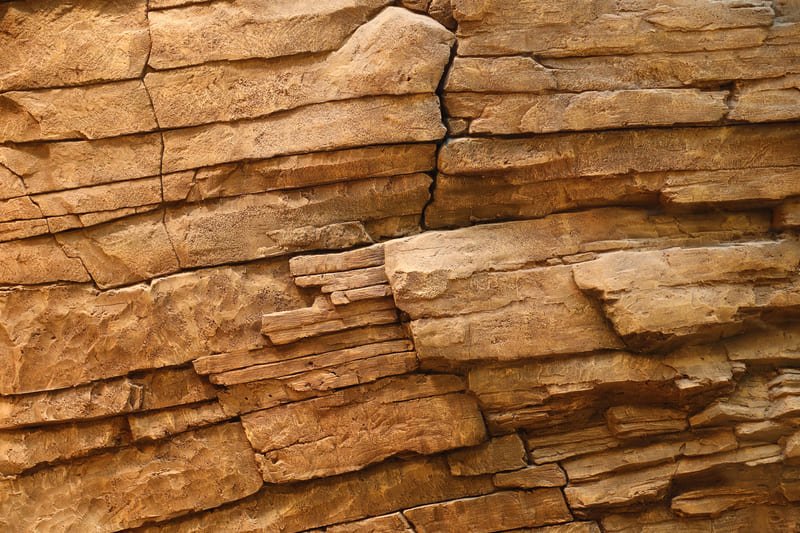
Hardness and Abrasiveness
I remember my first big project where we faced a wall of granite. Oh boy, did those drill bits take a beating! Rocks with minerals like quartz are so hard that they chew through bits faster than I could say "another replacement, please." High silica content in rocks acts like sandpaper on drill bits, causing what felt like mechanical erosion13 on our equipment.
Table: Rock Types and Their Effects on Drill Bits
| Rock Type | Hardness Level | Typical Minerals | Impact on Drill Bits |
|---|---|---|---|
| Granite | High | Quartz, Feldspar | Significant wear due to high hardness |
| Sandstone | Moderate | Quartz | Moderate abrasion |
| Limestone | Low | Calcite | Low wear; easy drilling |
Rock Fracture Toughness
Picture brittle shale breaking unevenly, creating jagged edges that pummel your drill bit with unpredictable force. It’s like trying to chop wood with a dull axe. In contrast, tougher rocks apply a more consistent pressure, giving us a fairer chance at extending the lifespan of our equipment.
Grain Size and Mineral Hardness
Dealing with large-grained rocks feels like being in a relentless game of whack-a-mole. Each grain acts as its own little anvil, deforming the bit's surface one hit at a time. And when mineral hardness varies within the same rock, it's like driving on a road with potholes—constant jarring!
Rock Homogeneity and Chemical Properties
Inhomogeneous rocks are like surprise parties—unpredictable! Just when you think you've got the texture figured out, a new patch alters the wear pattern. Some rocks even play the chemistry game under drilling conditions, reacting with fluids to add chemical wear into the mix.
By getting to grips with these factors, I can better choose drill bits that are built to handle specific conditions, maximizing their lifespan and performance. Explore further14 to discover more about selecting the best materials and designs for your drilling needs.
Quartz in rocks causes significant drill bit wear.True
Quartz is a hard mineral that increases abrasiveness, leading to faster wear.
Limestone drilling results in high drill bit wear.False
Limestone is soft, causing low wear and easy drilling compared to harder rocks.
How Do Chemical Properties of Rocks Affect Drill Bit Durability?
As someone who's spent countless hours wrestling with the challenges of drilling, understanding rock chemistry is a game-changer.
The chemical properties of rocks, like mineral composition and reactivity, directly impact drill bit durability by influencing wear patterns. High silica content or reactive minerals can speed up drill bit wear through both chemical and mechanical interactions.
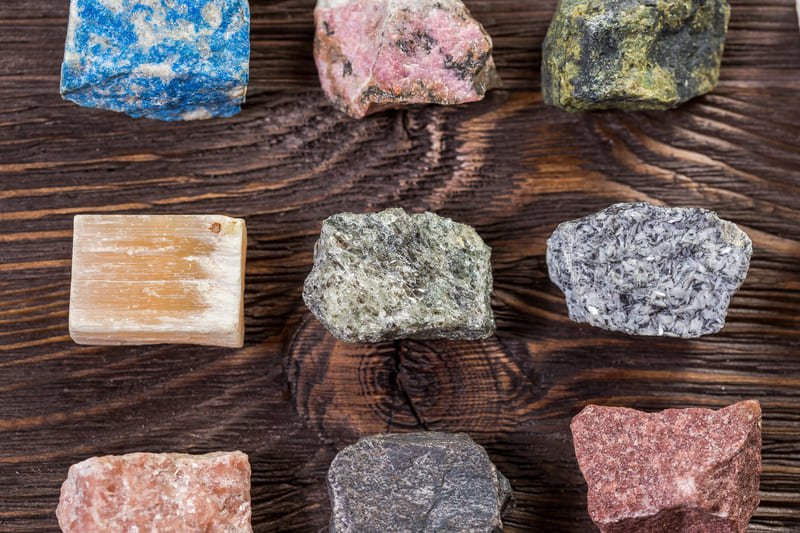
The Role of Mineral Composition
Imagine you're out on the field, drilling through a mountain of granite, and your drill bit seems to be wearing down faster than you expected. The culprit? Those pesky silica-rich minerals. Granite's high quartz content makes it as abrasive as sandpaper on a summer day at the beach, and your drill bit feels every grain. On the flip side, you might breathe a sigh of relief when tackling softer rocks, but don’t let your guard down. These can still pose a threat if they start reacting with your drilling fluids.
| Rock Type | Key Minerals | Impact on Drill Bits |
|---|---|---|
| Granite | Quartz | High abrasion |
| Shale | Clays | Variable reactivity |
| Limestone | Calcite | Potential chemical wear |
Chemical Reactivity and Wear
Picture this: water meets rock, and suddenly it's like a bad science experiment gone wrong. Some rocks form acids when they get wet, corroding your metal drill bits like an overnight rust storm. It’s crucial to understand these rock-fluid interactions to choose the right drill bit materials and avoid premature failures.
Explore how mineral reactivity15 affects wear in different drilling environments to better anticipate maintenance needs.
Impacts of Grain Size and Texture
Think of grain size like the size of hurdles in a race. Larger grains in rocks are like those giant hurdles that can cause micro-cracks or craters on your drill bit over time. Smaller grains might seem harmless but can still be deceptive little devils if they're hard enough.
Consider how grain size16 influences wear patterns in your specific application to optimize drilling operations.
Environmental Conditions and Their Effect
Now, let's not forget the wild card—environmental conditions. Whether it’s the scorching heat or the soggy ground, these factors can play havoc with your drill bits by speeding up chemical reactions. Keeping these conditions in check is just as important as understanding the rock itself.
Investigate strategies to manage environmental conditions17 during drilling to mitigate these effects effectively.
When I think about my own encounters with drilling challenges, it's clear that being aware of these rock properties isn’t just helpful—it’s essential for keeping everything running smoothly.
Granite causes high abrasion on drill bits.True
Granite contains quartz, a hard mineral that is abrasive to drill bits.
Shale always causes chemical wear on drill bits.False
Shale's impact varies; it depends on its clay minerals' reactivity.
Conclusion
Rock composition significantly affects crater wear on DTH drill bits, with hardness, abrasiveness, and chemical properties influencing durability and performance during drilling operations.
-
Learn how compressive strength affects drilling equipment and strategies. ↩
-
Understand how abrasive minerals contribute to drill bit wear. ↩
-
Discover how brittleness in rocks influences tool durability. ↩
-
Find out how variable rock resistance affects drill bit performance. ↩
-
Explore how chemical interactions during drilling increase wear rates. ↩
-
Compressive strength indicates the ability of a mineral to withstand pressure without deforming. Knowing this helps select appropriate drill bits. ↩
-
Quartz's hardness affects its abrasive action on drill bits. Understanding its position on the Mohs scale informs material choice. ↩
-
Chemical reactivity can alter wear patterns on drill bits, impacting longevity. Learning about it aids in selecting compatible drilling fluids. ↩
-
Understanding how fracture toughness affects drill bits can guide tool selection and optimize drilling performance. ↩
-
This link provides strategies to minimize downtime and reduce costs when drilling in tough rock environments. ↩
-
Explore micro-indentation tests for precise measurements of fracture toughness, aiding in tool design improvements. ↩
-
Discover methods to decrease operational costs in mining through improved tool performance and strategic planning. ↩
-
Learn how silica affects drill bit longevity due to its abrasive nature. ↩
-
Gain insights into selecting the best drill bits for specific rock types. ↩
-
Learn how different minerals in rocks chemically react with drill bits to anticipate maintenance needs. ↩
-
Discover how rock grain size influences mechanical wear on drill bits. ↩
-
Explore methods to control environmental factors during drilling to extend drill bit life. ↩

